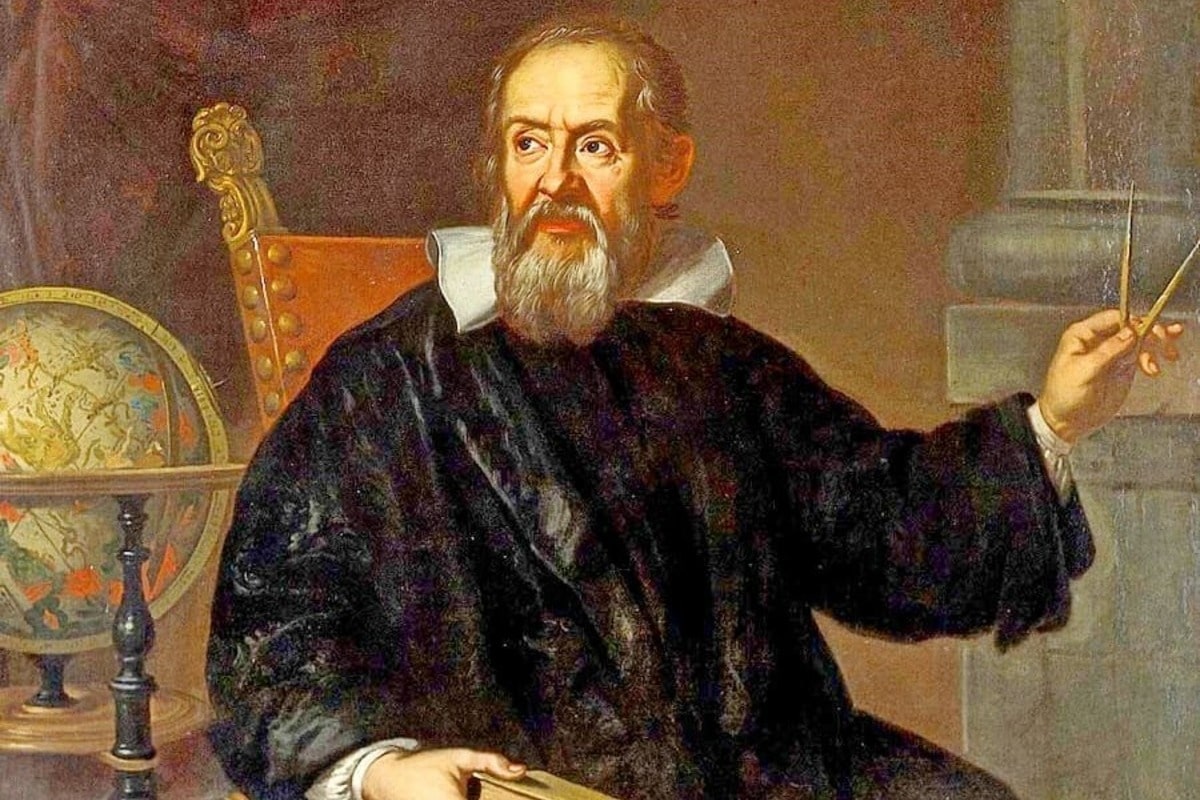Galileo Galilei is one of the most groundbreaking figures in the history of science, whose discoveries and ideas forever changed the way humanity views the universe. He was not only an astronomer and physicist but also a bold thinker who challenged the dominant dogmas of his time. His research laid the foundation for modern science, and his life became a symbol of the struggle for truth. Regardless of pressure from the Church or societal expectations, Galileo remained committed to reason and observation. Here are some fascinating and educational facts about Galileo Galilei that you might not have known.
- Galileo was born on February 15, 1564, in Pisa, Italy, the same year that Michelangelo died. This symbolic coincidence is often seen as a shift from an age of art to an age of science. His father, Vincenzo Galilei, was a musician and music theorist, which influenced Galileo’s logical and analytical thinking.
- At first, Galileo did not plan a scientific career and enrolled at the University of Pisa to study medicine. However, he soon became fascinated by mathematics and physics, eventually leaving medicine to pursue science. This decision shaped the course of his life and the future of modern science.
- One of his early inventions was the thermoscope, a device that could indicate temperature changes. Although it lacked a scale like modern thermometers, it allowed observation of heat variation. This invention marked the beginning of precision instruments in physics.
- Galileo was the first to conduct systematic experiments on the motion of falling bodies. He demonstrated that all objects fall at the same rate in a vacuum, regardless of mass. This refuted the long-standing beliefs of Aristotle.
- A well-known legend describes how he dropped two spheres of different masses from the Leaning Tower of Pisa to prove that they fell at the same speed. While there is no concrete evidence for this experiment, the principle is consistent with his ideas. He emphasized that science must be based on experiment and observation.
- In 1609, Galileo improved upon the telescope originally developed in the Netherlands, achieving up to 20 times magnification. This allowed him to observe celestial bodies in detail for the first time in history. His version of the telescope revolutionized astronomy.
- He discovered the four largest moons of Jupiter — Io, Europa, Ganymede, and Callisto — now known as the Galilean moons. Their orbits around Jupiter contradicted the geocentric model of the universe. This was a strong blow to Ptolemaic cosmology.
- Galileo was the first to observe the phases of Venus, which could not be explained by the Earth-centered model. This confirmed that Venus orbits the Sun, supporting the heliocentric theory of Copernicus. It was one of the most powerful arguments against geocentrism.
- Observing the Moon, Galileo concluded that its surface was not smooth but covered in mountains and craters. This challenged the idea that celestial bodies were perfect and unchanging. His drawings of the Moon were the first scientific depictions of another world.
- He determined that the Milky Way was composed of countless stars invisible to the naked eye. This significantly altered our understanding of the scale and complexity of the cosmos. People began to grasp the vastness of the universe for the first time.
- In 1610, Galileo published The Starry Messenger, detailing his telescopic observations. The book caused a sensation and made him famous across Europe. It was written in Italian, making it accessible to a wider audience beyond scholars.
- His open support of heliocentrism led to conflict with the Catholic Church. In 1633, he was tried by the Inquisition and sentenced to lifelong house arrest. Under pressure, he was forced to publicly recant his beliefs.
- Despite being under arrest, Galileo continued his scientific work and wrote Dialogue Concerning Two New Sciences, in which he laid out the principles of motion and mechanics. The book became a cornerstone of modern physics. It was published in the Netherlands to avoid censorship.
- Galileo formulated the principle of inertia, which later became Newton’s first law of motion. He argued that a body in motion stays in motion unless acted upon by an external force. This idea was revolutionary at the time.
- While studying pendulums, he discovered that their period of swing is constant regardless of amplitude. This led to the development of accurate pendulum clocks. His work revolutionized the measurement of time.
- Unlike many scholars of his time, Galileo wrote in Italian rather than Latin. He wanted his discoveries to be understandable to ordinary people, not just the elite. This decision helped democratize scientific knowledge.
- He maintained correspondence with leading scientists of his era, including Johannes Kepler. Although they had different views, their exchange of ideas enriched scientific discourse. Their communication helped shape a new approach to scientific thinking.
- Galileo died on January 8, 1642, at the age of 77. In the same year, Isaac Newton was born, who would carry forward Galileo’s legacy and complete the framework of classical physics. This coincidence is often seen as a symbolic passing of the torch.
- It was not until 1992 that the Vatican officially acknowledged its error in condemning Galileo. Pope John Paul II issued a formal apology on behalf of the Church. This act was a significant gesture of historical reconciliation between science and religion.
These incredible facts about Galileo Galilei show how powerful the human mind can be when guided by curiosity and courage. His legacy in science is immeasurable, and he continues to inspire generations of thinkers. Galileo proved that truth prevails, even when silenced for a time. Such fascinating facts help us better appreciate his greatness and the legacy he left to humanity.





